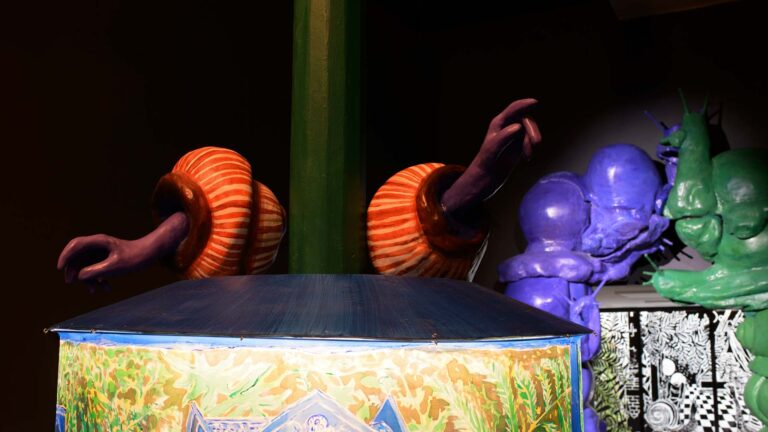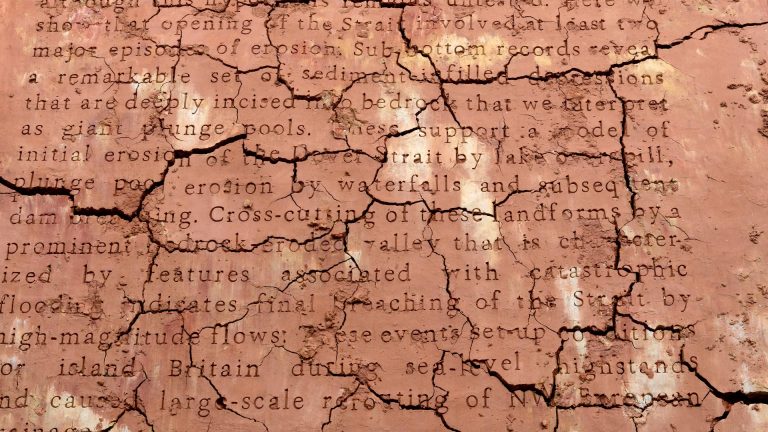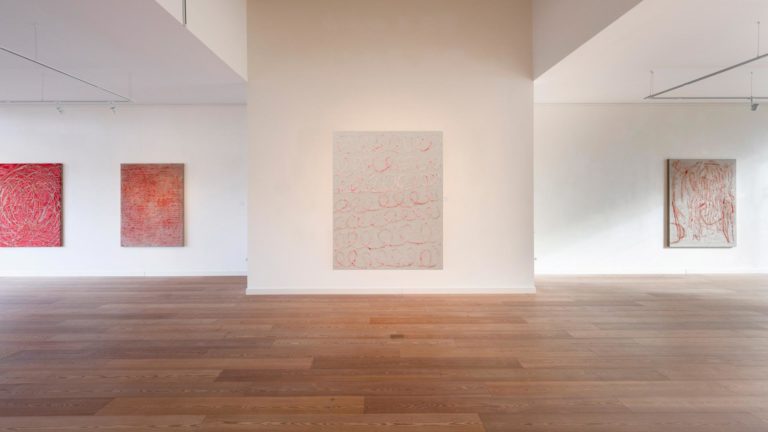Artists: Matthias Dornfeld, Puppies Puppies, Liesbeth Bik, Paul van der Eerden, Jos Van der Pol, Erik van Lieshout, Klaas van Gorkum, Iratxe Jaio, Katarina Zdjelar, Nienke Terpsma, Rob Hamelijnck, Gilbert van Drunen, Sabrina Chou, Sjoerd Westbroek, Woody van Aamen, Siah Armajani, Richard Artschwager, John Baldessari, Iain Baxter, Mel Bochner, George Brecht, Jack Burnham, James Lee Byars, Robert H. Cumming, Francoise Dallegret, Jan Dibbets, John Giorno, Robert Grosvenor, Hans Haacke, Richard Hamilton, Dick Higgins, Davi Det Hompson, Robert Huot, Alani Jacquet, Ed Kienholz, Joseph Kosuth, Les Levine, Sol LeWitt, Robert Morris, Bruce Nauman, Claes Oldenburg, Dennis Oppenheim, Richard Serra, Robert Smithson, Guenther Uecker, Stan Van Der Beek, Bernar Venet, Frank Lincoln Viner, Wolf Vostell, William Wegman, William T. Wiley
Exhibition title: 4 works, 55 artists, one drawing
Venue: Rib, Rotterdam, The Netherlands
Date: December 12, 2015 – February 14, 2016
Photography: images copyright and courtesy the artists and Rib
Puppies Puppies
“Woof woof Puppies Puppies woof woof woof, woof woof woof woof woof. Woof woof woof woof woof woof. Woof, woof woof woof woof woof woof woof — woof woof, woof woof woof woof woof, woof woof woof woof. Woof woof, Woof Woof woof Woof, woof Woof Woof woof woof woof woof. Woof woof woof woof woof.”
The condom with canned spaghetti in it, started off as a viral image that Puppies Puppies found on IMGUR. IMGUR is a website that shows some of the most viral images on the internet at
any given time. The image was a condom with spaghetti in what looked liked a bed. It seemed like it was supposed to be a prank on someone. Puppies Puppies was really drawn to how visceral / disturbing the image was while also being as simple as combining two household things.
Puppies Puppies’ work contains a series that is simply taking viral imagery and making them come to fruition as sculptures. Recently he had Levy Delval Gallery in Brussels recreate the condom and put it on the gallery floor. “The gallery image then went viral which was super unexpected and I think it’s because it was a cleaner image of the condom and it also wasn’t in a bed like the original image.” The image of his art went viral because the inspiration was from a viral image. According to Puppies Puppies “the best way to investigate the “viralness” is just to use google image search and try variations like spaghetti, condom, or condom full of spaghetti.”
A few months ago the image of his art made it on to the front page of IMGUR, which showcases THE most viral images. That was where he found the original prank image.
Matthias Dornfeld
Untitled (Portrait), 2012
Untitled (Flowers), 2013
Matthias Dornfeld born 1960 in Esslingen, Germany lives and works in Berlin. Dornfeld’s small- scale paintings are based on his longtime interest in conventional themes, such as portraiture, landscape and still life. Within his interest in particular painting discourses, he not only operates in the tradition of classical pictorial genres, but also generates a visual aesthetic characteristic
of earlier approaches to naïve expressive painting. Dornfeld’s work ultimately demonstrate that they are more acutely situated in the inventive painting strategies of analytical abstraction.
“Dornfeld’s constant tacking between different historical painterly motifs and –isms in a burlesque, easily readable painting style makes it seem to the viewer as if he is referring to these motifs and –isms, whereas in fact this is precisely not the case. On the contrary, for both the viewer and himself Matthias Dornfeld creates a painterly smokescreen, a series of ‘style clouds’ as it were.
In the case of the viewer it is because, just as he thinks he feels able to play with these various historical stylistic referents as he looks, he is made to face the fact that he is looking at nothing more than an exact, childishly deformed cliché of them. Conversely, Dornfeld uses his style clouds for exactly the opposite: as a structuring artistic and painterly, historically justifiable excuse to… be able to paint as freely and playfully as possible. Whereby he actually seems to be saying: ‘I’m sorry, chaps, but unfortunately it’s nothing more than a stupid vase… But I have painted it with total freedom.’”
Excerpt from a text by Thibaut Verhoeven, July 2014
After Julie de Graag, Studieblad met kippen en kuikens, 1877–1924
By the end of this exhibition seventeen Rotterdam based artist will have generously reproduced
a chicken, a chick and the only disembodied duck-head from the original drawing of the Art- Nouveau artist Julie de Graag (Gorinchem, 18 July 1877). The idea emerged from the fact that we soon realized Rib cannot house an item from a collection of a museum even-though we would have liked to. We simply do not meet the climate standards. Yet it is important for Rib to work with art historical materials from a contemporary point of view. The whole of art history being our toolbox, we needed to find an alternative for our infrastructural deficiency to be able to treat art history as more than an echo of the past and thus decided to recreate a contemporary object (drawing) that retroactively intervenes in the art historical narrative conserved by the museum collection. The reproduction had to at least be as original as the original. We thought a proper way to do that would be to fuse the reproduction with accumulated labour time and artistic cap- ital based on pictorial derivatives produced by local artists. The artists were asked to each choose a figure from the original drawing and to make a life like reproduction with pencil. The new drawing resulted in a gradual conglomeration of divergent practices and generations of artists into one surface measuring 700 x 1000mm. The original is only 156 × 227 mm and is currently
in the collection of Museum Boijmans van Beuningen. It was donated to the Museum by M.J. de Graag in 1954.
Participating artists: Liesbeth Bik, NL, Sabrina Chou, NL, Gilbert van Drunen, NL, Klaas van Gorkum, NL, Rob Hamelijnck, NL, Iratxe Jaio, NL, Erik van Lieshout, NL, Jos Van der Pol, NL, Nienke Terpsma, NL, Sjoerd Westbroek, NL, Katarina Zdjelar, NL, Woody van Aamen, NL Paul van der Eerden, NL.
Art by Telephone, 1969, Museum of Contemporary Art Chicago
“Shortly after its opening, the Museum of Contemporary Art planned an exhibition to record the trend, incipient then and pervasive today, toward conceptualization of art. This exhibition, scheduled for the spring of 1968 and abandoned because of technical difficulties, consisted of works in different media, conceived by artists in this country and Europe and executed in Chicago on their behalf. The telephone was designated the most fitting means of communication in relay- ing instructions to those entrusted with fabrication of the artists’ projects or enactment of their ideas. To heighten the challenge of a wholly verbal exchange, drawings, blueprints or written descriptions were avoided.”
Jan van der Marck (covertext)
Participating artists: Siah Armajani, Richard Artschwager, John Baldessari, Iain Baxter, Mel Bochner, George Brecht, Jack Burnham, James Lee Byars, Robert H. Cumming, Françoise Dallegret, Jan Dibbets, John Giorno, Robert Grosvenor, Hans Haacke, Richard Hamilton, Dick Higgins, Davi Det Hompson, Robert Huot, Alani Jacquet, Ed Kienholz, Joseph Kosuth, Les Levine, Sol LeWitt, Robert Morris, Bruce Nauman, Claes Oldenburg, Dennis Oppenheim, Richard Serra, Robert Smithson, Guenther Uecker, Stan Van Der Beek, Bernar Venet, Frank Lincoln, Viner Wolf Vostell, William Wegman, William T. Wiley.
Cover: b/w, gatefold, documentation photograph, texts about the artists and an introduction by Jan van der Marck. Design: Sherman Mutchnick
Sol Lewitt, Equivalent of No. 26, 2015
Sol Lewitt has made pencil and crayon drawings of a geometric nature directly on gallery walls. For this exhibition we have followed his telephone instructions from the Art by Telephone record: that a 60 × 60” drawing be executed on a wall of the museum by a local draughtsman. Starting with a grid of one-inch squares, the draughtsman should then fill these squares, at his discretion, with diagonal, horizontal and vertical pencil lines.
In 2008 David Platzker (Specific Objects/Publications and drawings curator Moma) excecuted
Sol Lewitt’s instructions at Specific Objects, New York. In an email conversation I asked him why he chose Sol Lewitt: “For me it is the most pure vision an artist could have in regards to the mandate of the record—pure instructions. His work is similar to a very early wall drawing, No. 26. But it’s the last few words that LeWitt speaks that were the most important to me: that what
he believes he’s doing is similar to a composer writing music and what a musician does / presents is an interpretation of the composer’s vision. It’s never the same thing twice. This statement is the most pure vision of conceptualism in its Platonic form, spoken by one of the best conceptual artist and at a critical moment in both his development and of the movement’s.”
David Platzker, 2015

























